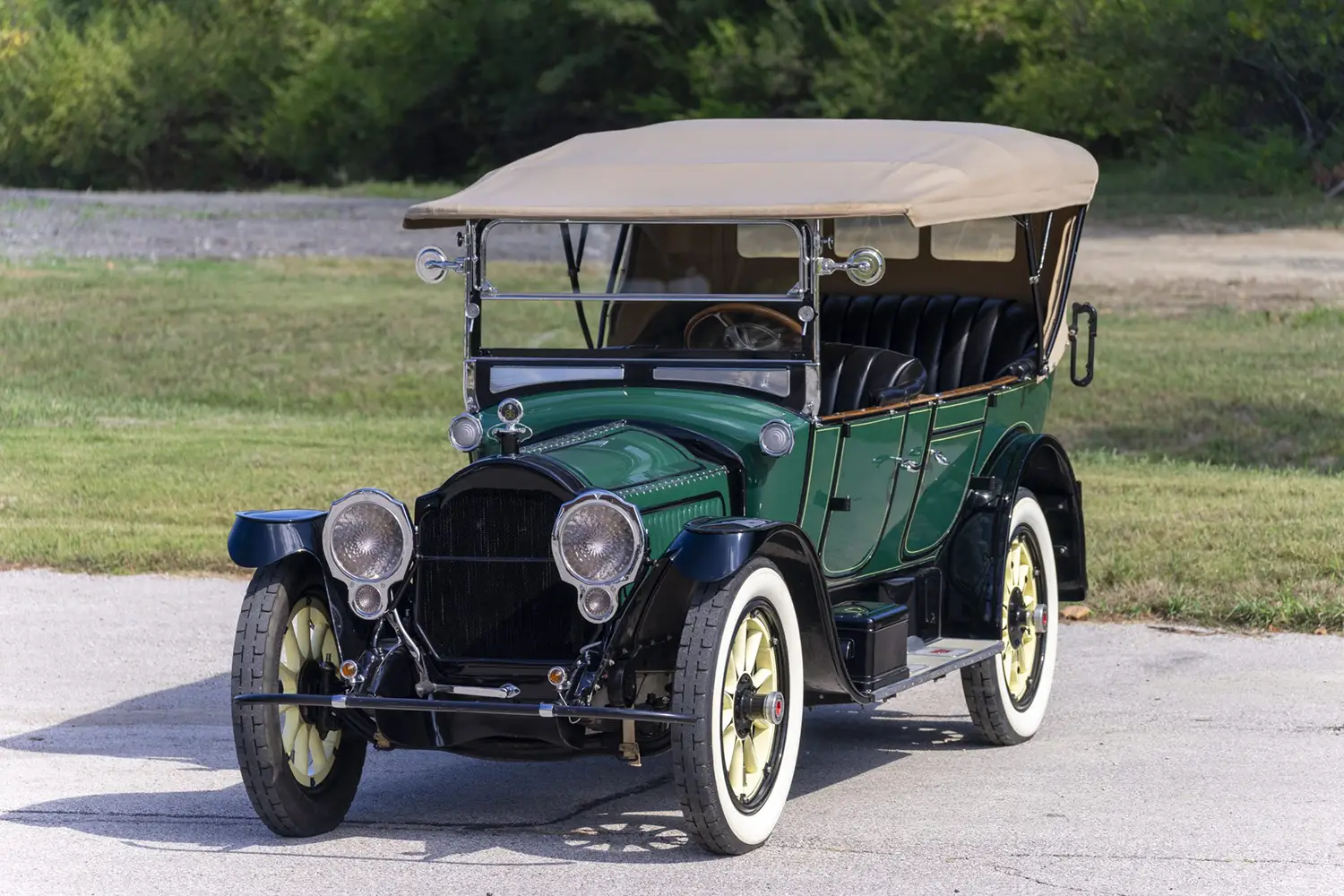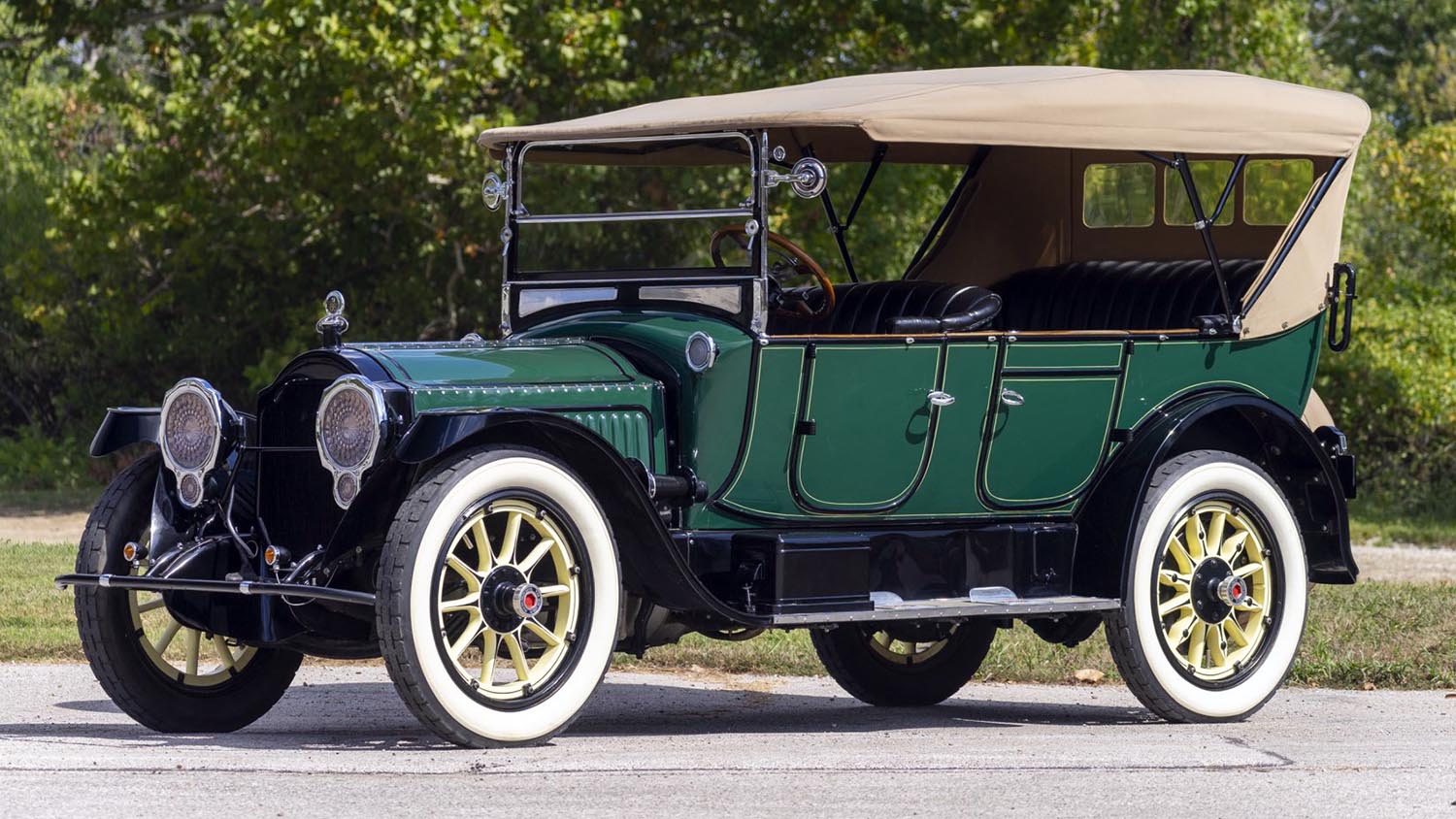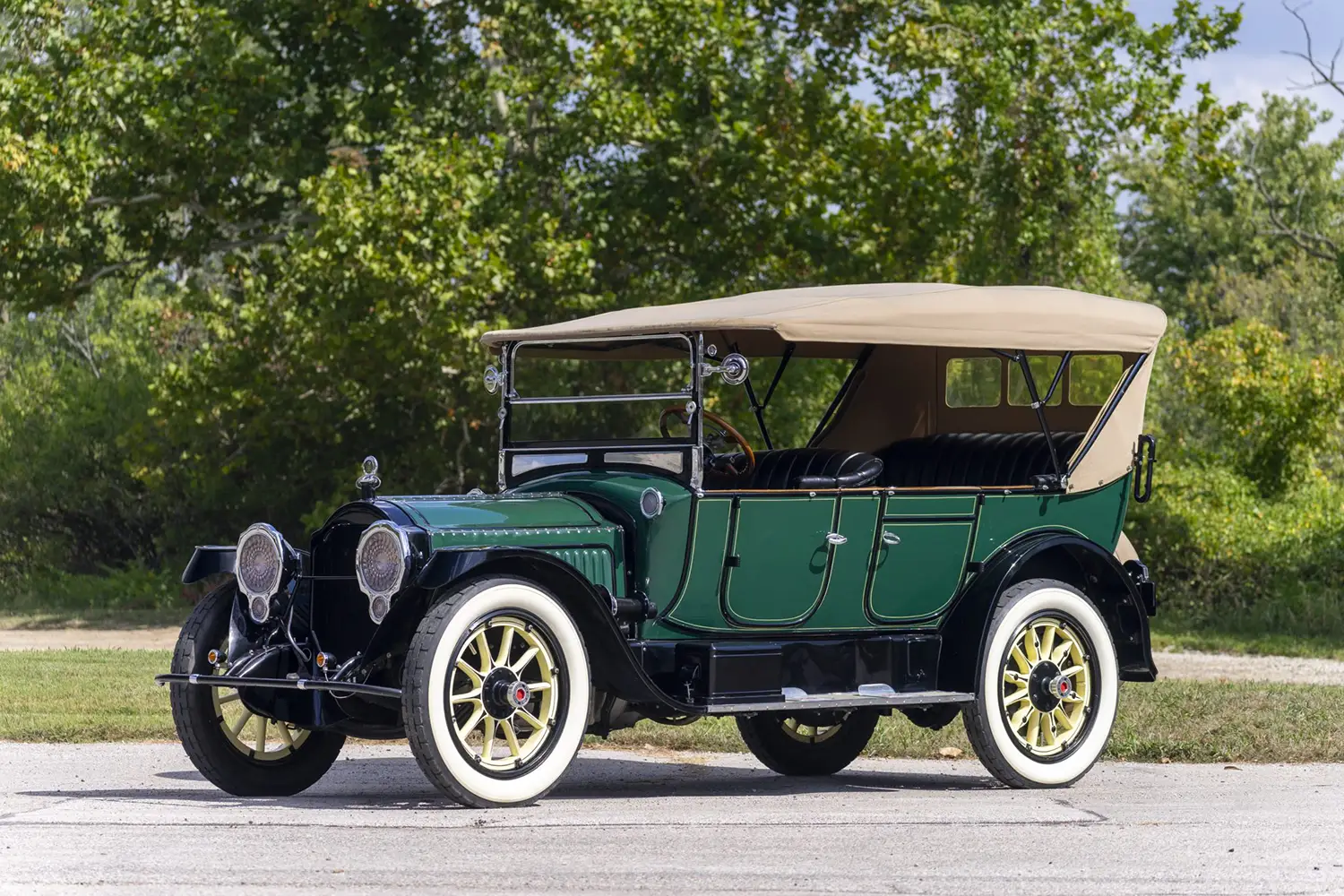
This 1917 Packard Twin Six Touring Car spent nearly four decades off the road before being acquired in 1956. It remained with the same family for 69 years and now surfaces in Saint Louis with its original V12 and period-correct details.
Historical Background and Ownership
Packard introduced the Twin Six in 1915, marking its first V12-powered model. This Second Series example was built on the 125-inch wheelbase 2–25 chassis.
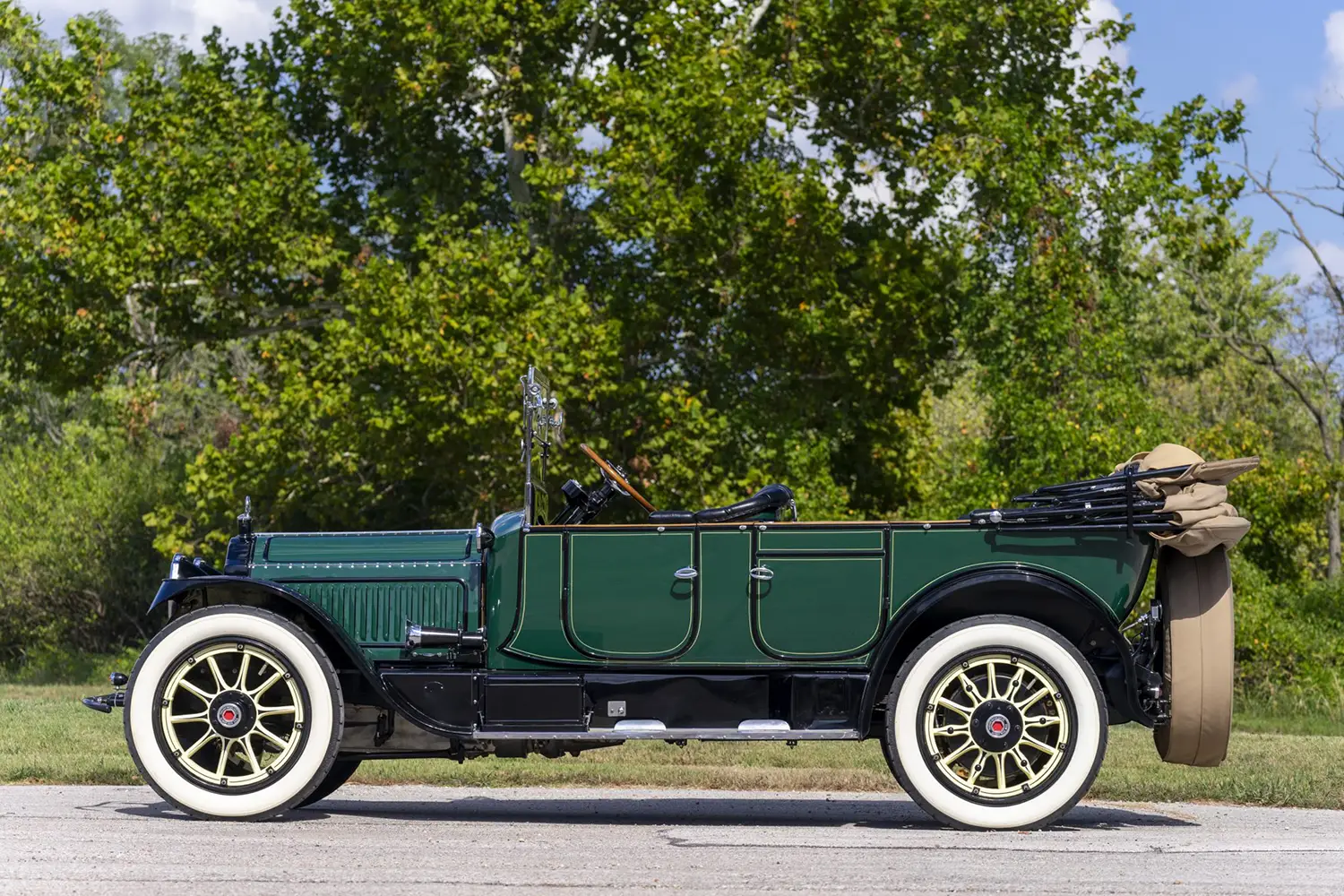
It was reportedly parked after its original owner died in World War I. The current owner and his father purchased it in 1956 and began mechanical refurbishment.
Exterior and Touring Equipment
Refinished in green with black fenders and yellow pinstriping, the car retains its touring bodywork. A tan soft top and side curtains are included.
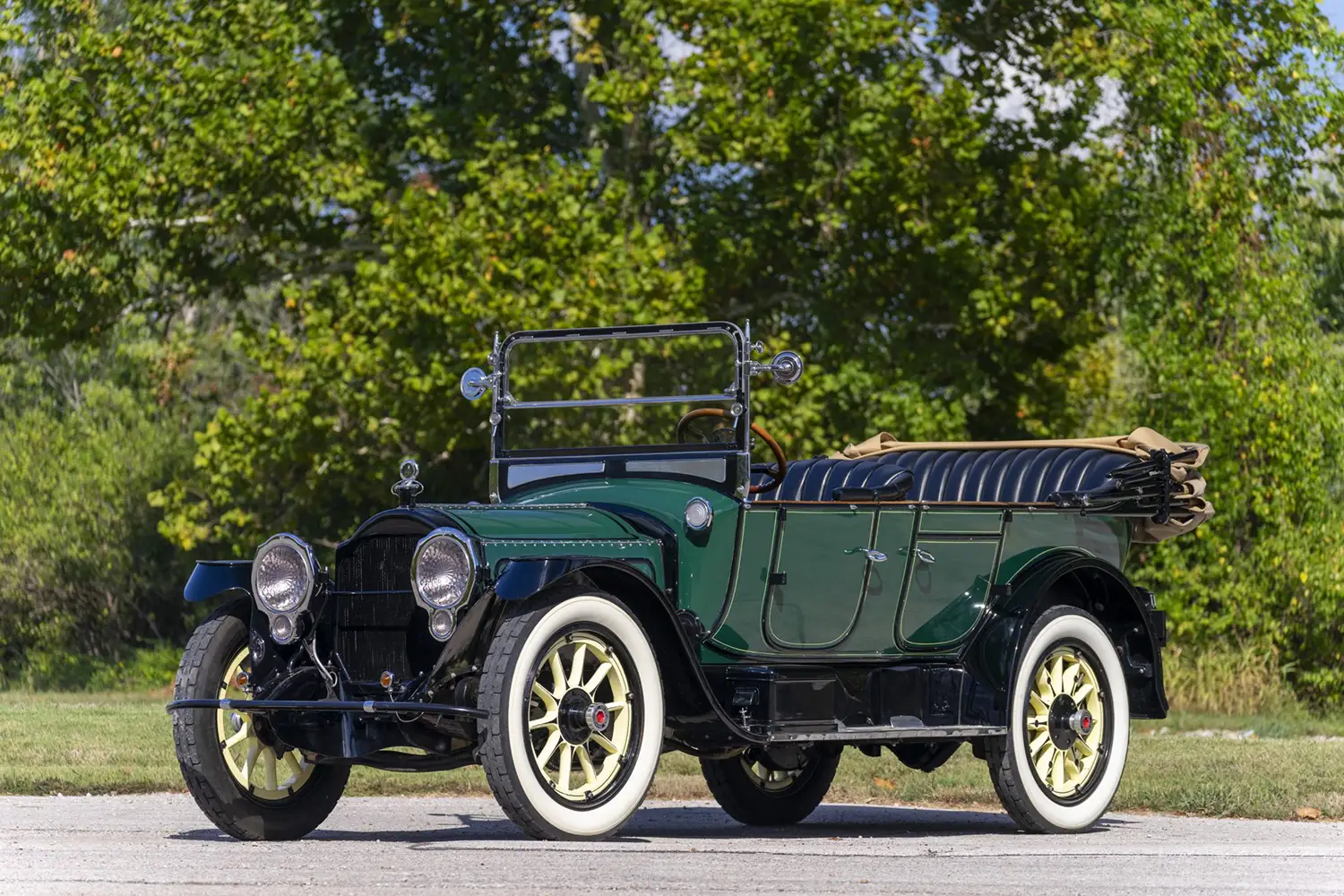
Nickel-plated trim, electric headlights, cowl lamps, and a Boyce MotoMeter radiator cap add visual character. Rear turn signals and a high-mount brake light were added later.
Wheels, Suspension, and Braking
Wood-spoke wheels are painted yellow with black accents. They wear Goodrich Silvertown bias-ply whitewall tires sized 35×5 inches.
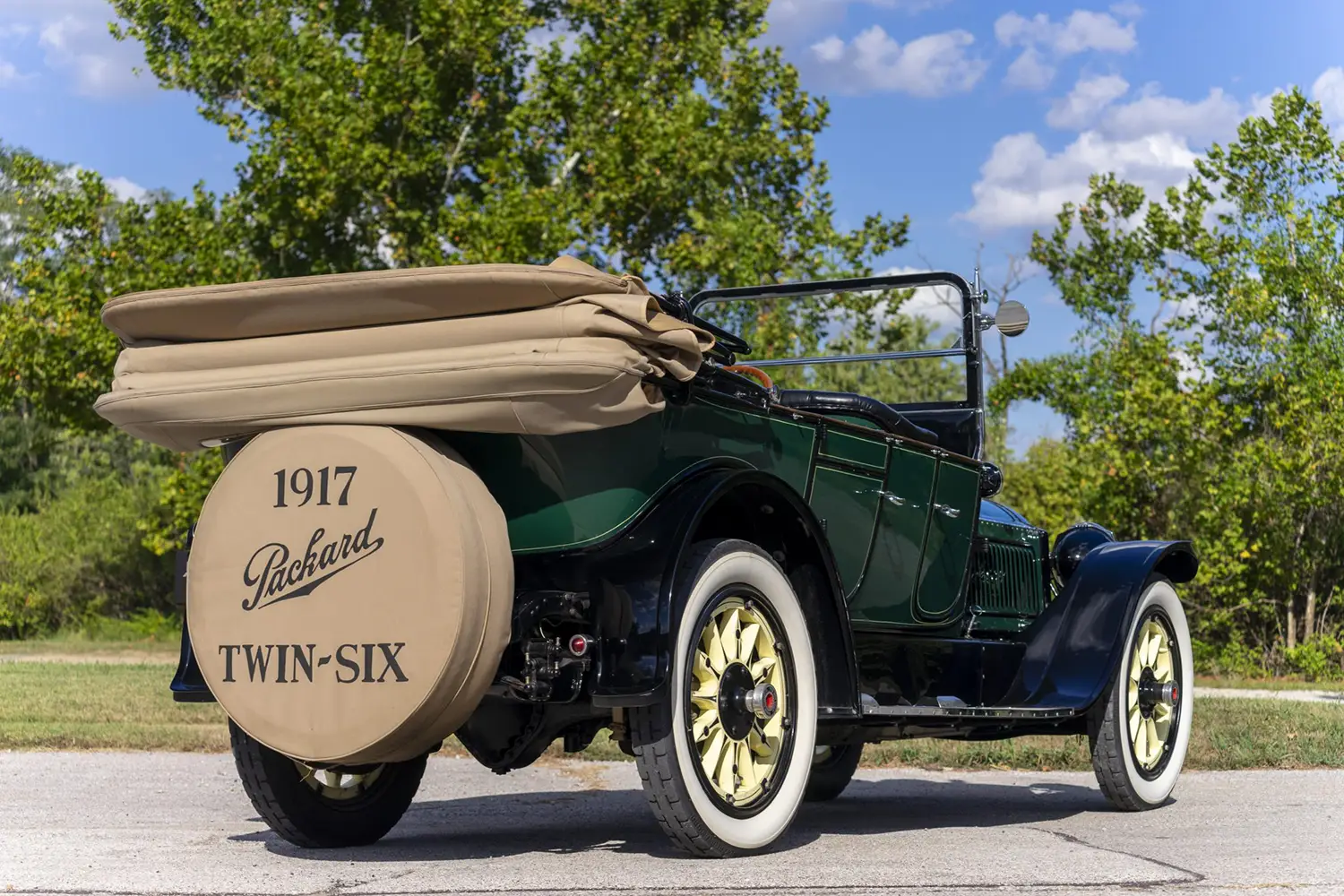
Gabriel Snubbers and semi-elliptical leaf springs support the solid axles. Mechanical drum brakes operate at the rear wheels only.
Interior Layout and Features
The front bench seat is trimmed in black tufted upholstery. Wood trim surrounds the cabin, and the steering wheel includes spark advance controls.
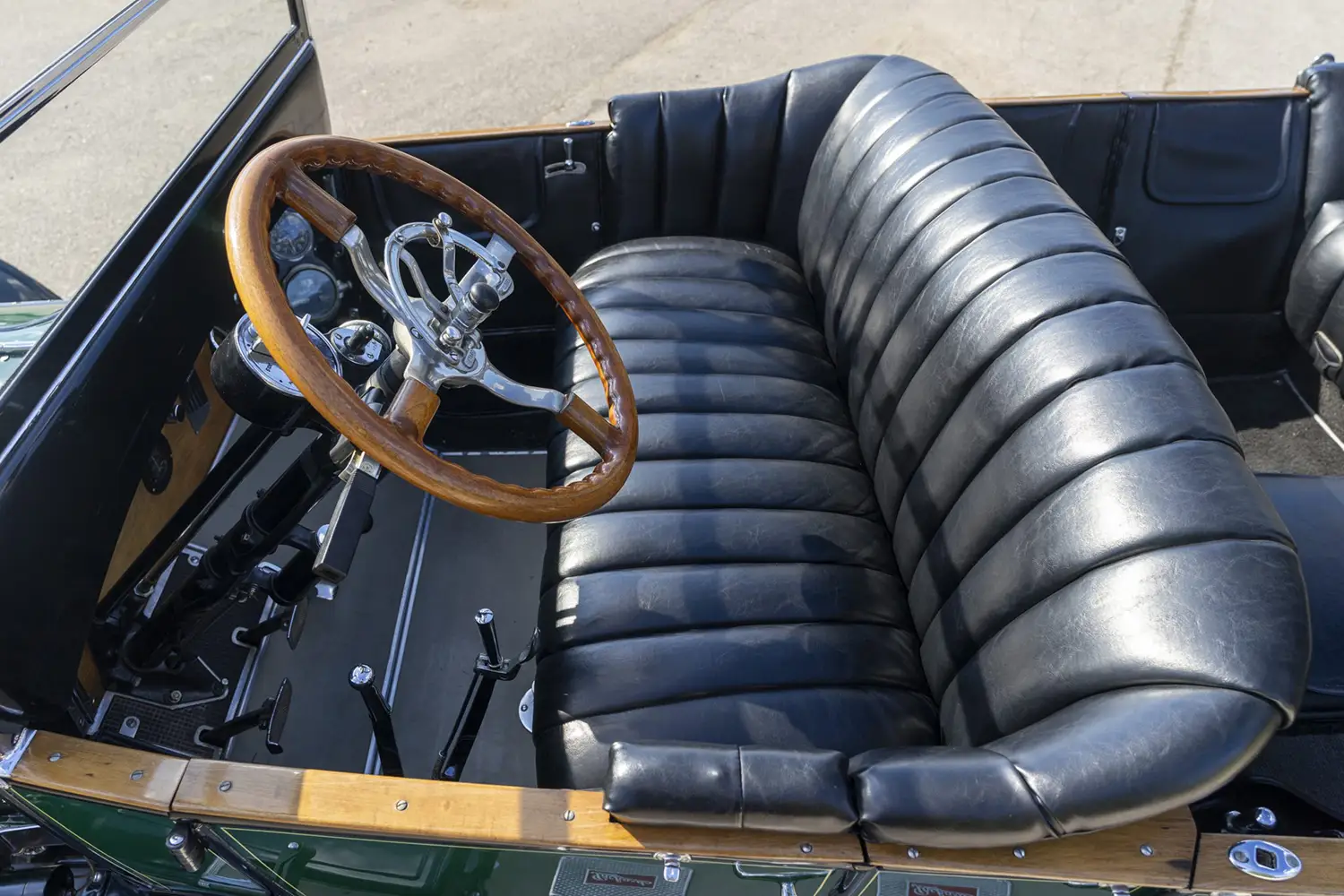
Instrumentation includes a Packard-branded Waltham speedometer, an eight-day clock, and gauges for fuel, oil, and amperage. Some components are non-functional.
Rear Seating and Cabin Details
Rear-hinged doors open to a pleated bench seat and two jump seats. Black carpets and storage pockets complete the rear compartment.
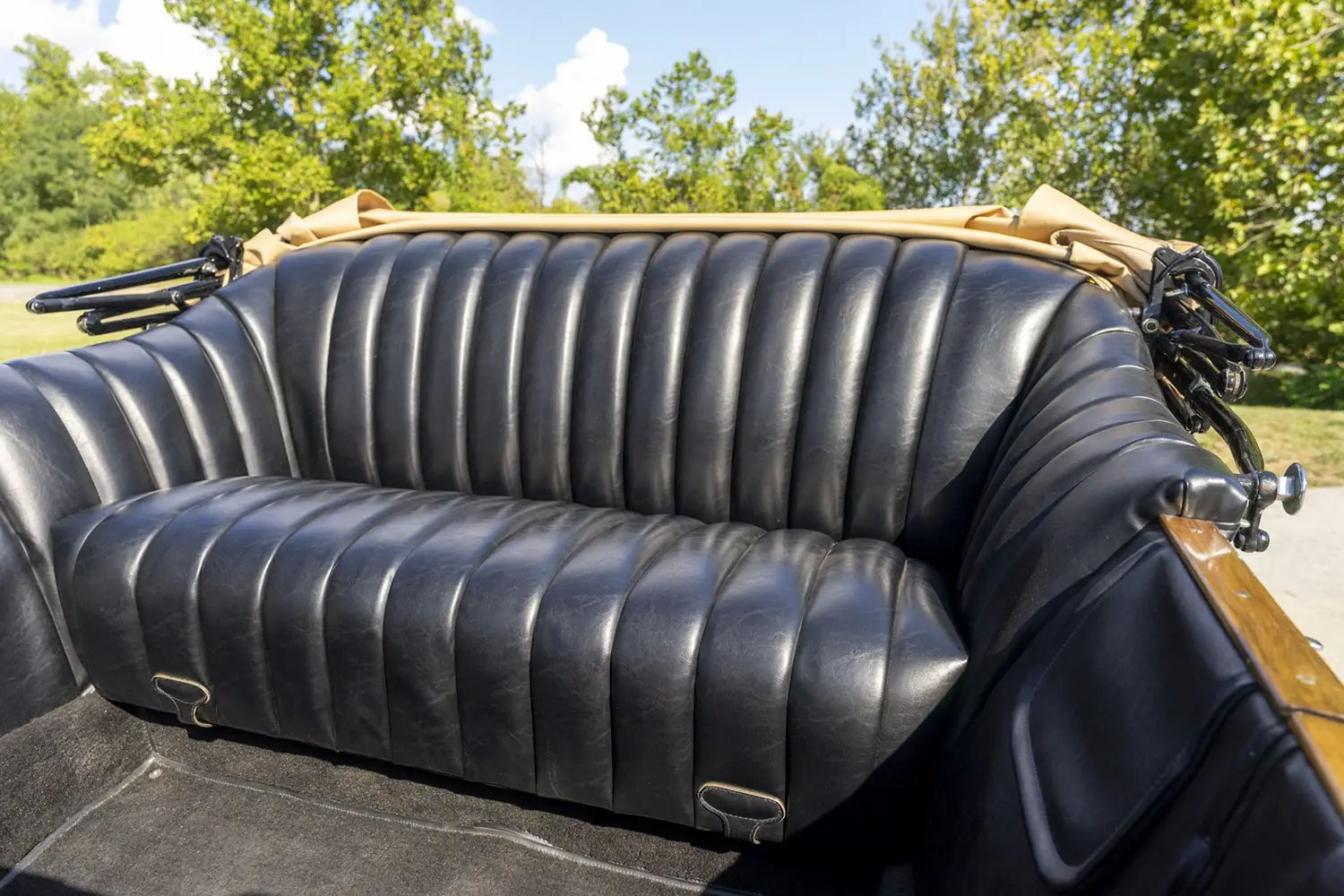
The driver’s door houses a tool pouch. A chassis plate is mounted on the wood dashboard panel.
Powertrain and Performance
The 424.1ci L-head V12 was designed by Jesse Vincent. It features aluminum pistons and detachable cylinder heads, new for 1917.
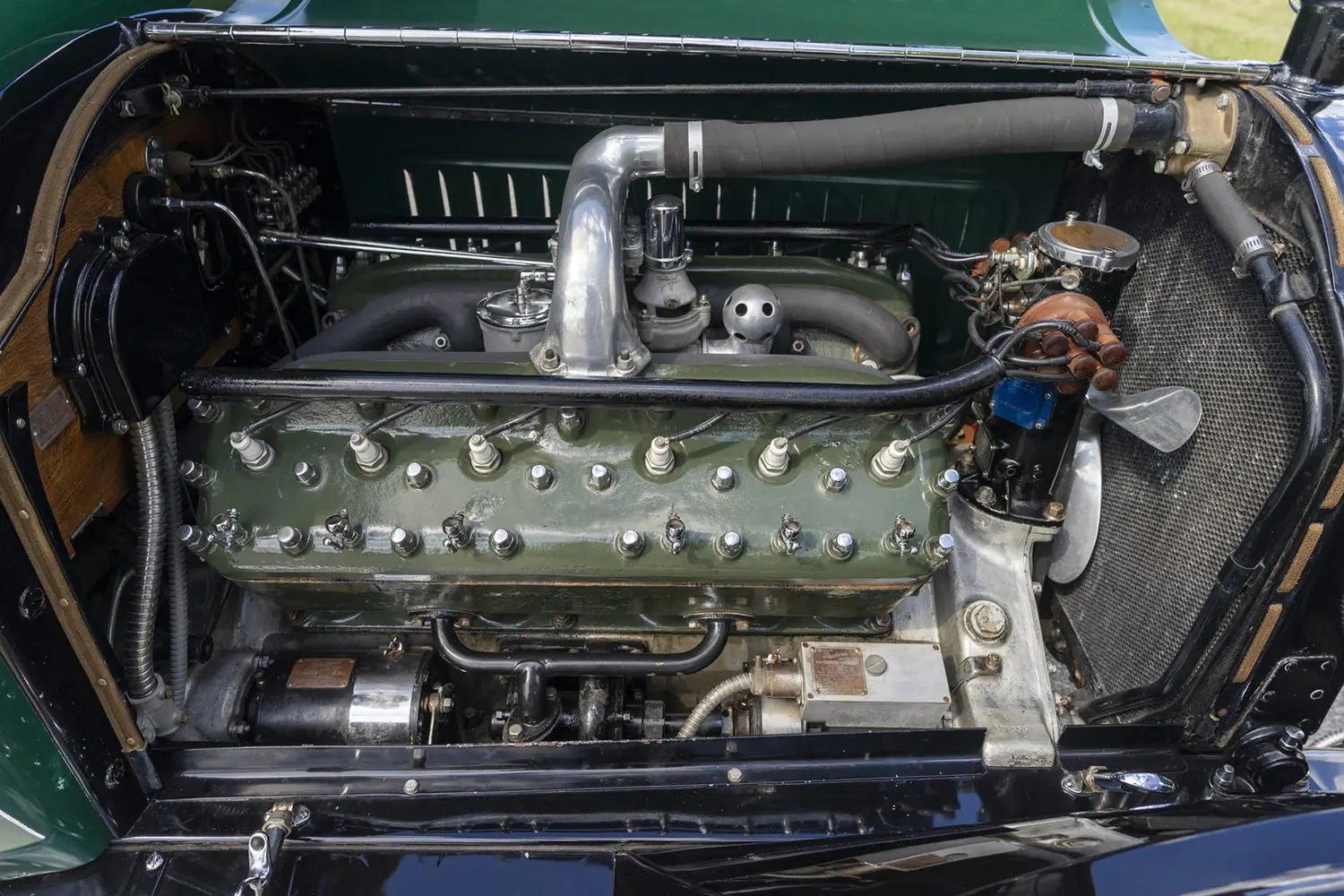
Factory output was rated at 88 horsepower. Power is sent to the rear wheels through a three-speed manual transmission and spiral-bevel rear gears.
Summary
This 1917 Packard Twin Six Touring Car blends historical significance with mechanical authenticity. With its V12 engine, wood-spoke wheels, and preserved touring body, it offers a rare glimpse into prewar luxury motoring, still intact after nearly seven decades of single-family ownership.
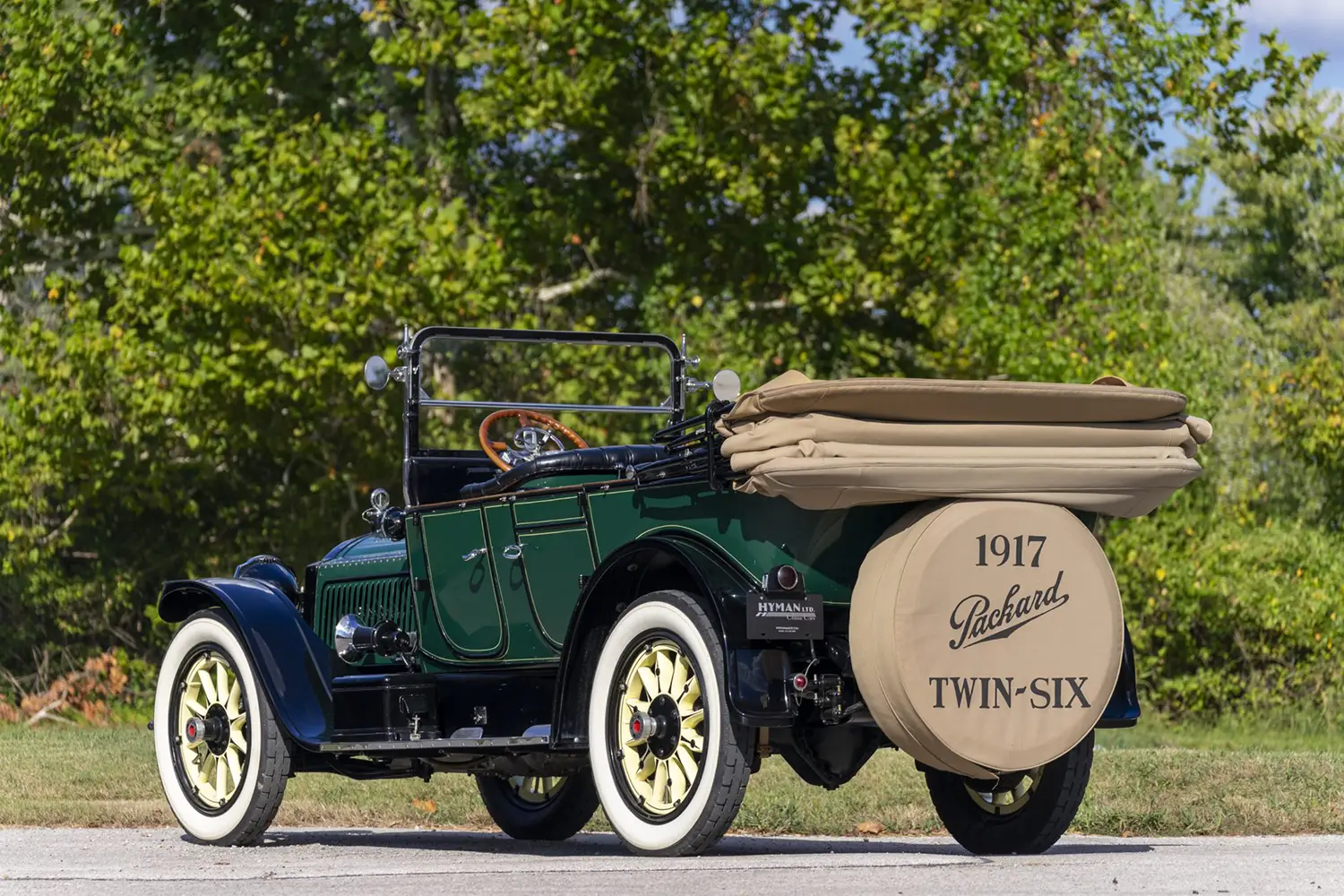
Disclaimer: This article is for informational and entertainment purposes only. The information provided is based on market trends and personal opinions and should not be considered financial or investment advice. Readers should always conduct their own research and consult with a professional advisor before making any decisions.
Source & Details: bringatrailer.com
